Identifying the largest dinosaurs ever lived isn’t an easy task, because it’s very rare to unearth a complete fossil. Furthermore, only a tiny percentage of these amazing animals were ever fossilized, and most of these “lucky” bodies will remain buried underground forever. So, we may never know exactly what dinosaur was the biggest (or the tiniest) ever.
Despite this fact, size always has been one of the most interesting aspects of these prehistoric animals. There are extreme variations in their size, from the tiny hummingbirds, which can weigh as little as three grams, to the titanosaurs, which could weigh as much as 70 tonnes, or even more.
Here are the largest dinosaurs ever lived.

Biggest Herbivorous Dinosaurs
Patagotitan
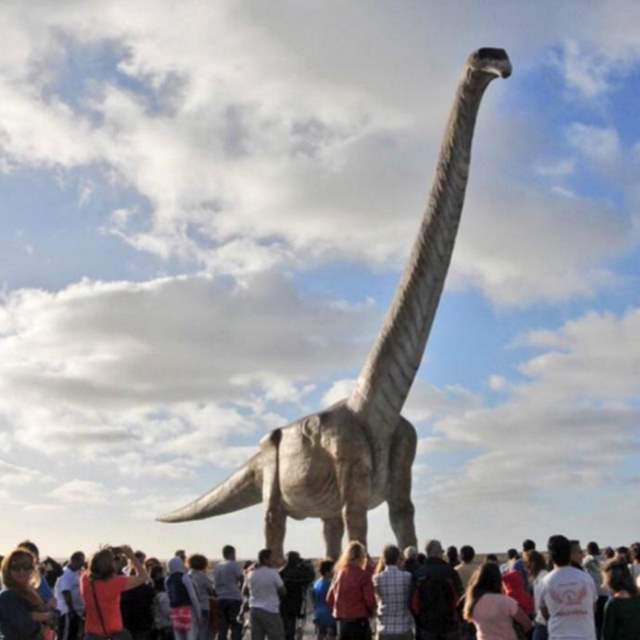

A study published on August 8, 2017, in the journal Proceedings of the Royal Society B. proclaimed a newly named species the heavyweight champion of all dinosaurs: Patagotitan mayorum. It was named after Patagonia region where it was found, and the Greek word “titan”. Six fossils of the species were studied. According to the first estimates, the dinosaur averaged 122 feet (37 meters) long and was nearly 20 feet (6 meters) high at the shoulder. Based on ash found around them, the fossils were dated to about 100 million years ago.
According to Kristi Curry Rodgers, a paleontologist at Macalester College who wasn’t part of the study, Patagotitan’s bones show signs that they haven’t completed their growth “which means that there are even bigger dinosaurs out there to discover”.
Meet Patagotitan mayorum, one of the largest dinosaurs ever discovered, which also means it’s one of the biggest land animals that’s ever lived. Patagotitan may have been as large as any land animal could possibly get, weighing as much as 12 elephants. It belongs to a group of dinosaurs known as Titanosaurs, which include other enormous long-necked species. Scientists are studying its very complete skeleton found in Argentina’s Patagonia region. The quality of the remains allows for a detailed study of how such a huge body works.
But, some other paleontologists, including Matt Wedel who studies sauropods and the evolution of pneumatic bones in dinosaurs think that noted that based on available measurements Patagotitan was comparable in size to other known giant titanosaurs, however, almost every bone measurement that could be compared are larger in Argentinosaurus.
In 2019, the American researcher who is best known for his work and research on theropod dinosaurs and his detailed illustrations, Gregory S. Paul listed Patagotitan at 31 meters (102 feet) in length and 50-55 tonnes in weight using volumetric models, making it smaller than Argentinosaurus which was estimated at 35 meters (115 feet) or more in length and 65-75 tonnes in weight.
Argentinosaurus
Argentinosaurus huinculensis (meaning “Argentine lizard”) was thought to be one of the largest, longest, and heaviest dinosaurs ever lived. It is a genus of titanosaur sauropod dinosaur first discovered in Argentina (hence it is named Argentinosaurus). It lived on the then-island continent of South America somewhere between 94 and 97 million years ago, during the Late Cretaceous Epoch.
Argentinosaurus’size was estimated as:
- More than 35 meters (115 feet) in length
- 7.3 meters (24 ft) in height
- 65-75 tonnes in weight.Its maximum length also revised to 35 meters (115 feet).
Studies show that Argentinosaurus do not stop growing their entire lives. One article found that Argentinosaurus hatchlings would have had to grow 25,000 times their original size before reaching adult size.
John Hurt narrates the facts behind the discovery of a huge nesting site in modern-day Patagonia. Fossilized remains show Argentinosaurus laid tens of thousands of eggs in a 15 km nesting site used for hundreds of thousands of years. The hatchlings, if they survive, will grow at an incredible rate. Over a 40-year lifespan, Argentinosaurus can grow from 4 kg to 75 tons! Narrated by John Hurt Planet Dinosaur tells the stories of the biggest, deadliest, and weirdest creatures ever to walk the Earth, using the latest fossil evidence and immersive computer graphics.

Supersaurus: The longest dinosaur ever lived
According to the current scientific consensus, Supersaurus is probably the longest dinosaur ever lived, possibly reaching 39-40 meters (128-131 ft) in length. But, Argentinosaurus and Patagotitan were much heavier and bulkier than the Supersaurus. Supersaurus had a weight of 31.8-36.3 tonnes.

Chucarosaurus
In 2018, Paleontologists in Argentina made an exciting discovery: the remains of a colossal, long-necked dinosaur from the mid-Cretaceous period, named Chucarosaurus diripienda. This newly identified dinosaur species is estimated to have measured a staggering 100 feet (approximately 30 meters) in length, presenting a significant addition to our understanding of dinosaur biodiversity during this epoch. Living approximately 90 million years ago, this gigantic creature adds a fresh dimension to our knowledge of the ancient lifeforms that once roamed the Argentine landscape, and provides invaluable insights into the scale and diversity of prehistoric life.
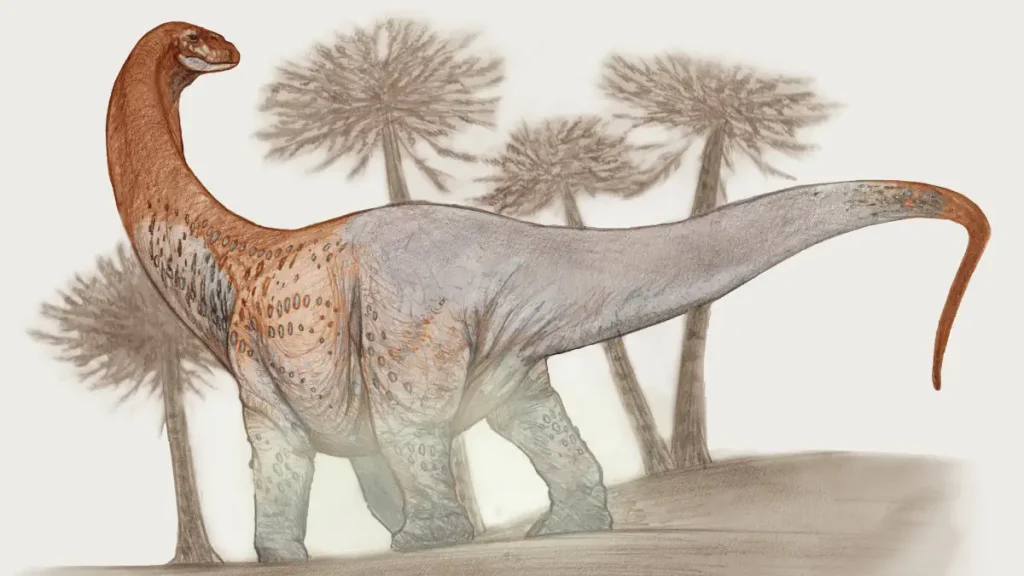
Largest Carnivorous Dinosaur: Spinosaurus aegyptiacus
This terrifying giant was the largest, longest, and heaviest carnivorous ever lived. Spinosaurus (meaning “spine lizard”) is a genus of theropod dinosaurs that lived in what now is North Africa, during the lower Albian to lower Cenomanian stages of the Cretaceous period, about 112 to 97 million years ago.
Since its discovery, Spinosaurus has been a contender for the longest and largest theropod dinosaur. Its size is estimated at up to 16 to 18 meters (52 to 59 ft) in length and 11.7 to 16.7 tonnes (12.9 to 18.4 short tons) in weight.
Some experts insist that the biggest meat-eater was the South American Giganotosaurus, which may have matched, and occasionally even outclassed, its northern African cousin.
Spinosaurus comes across Carcharodontosaurus feeding on a carcass. A dangerous fight is inevitable. Spinosaurus has size and strength on his side, but Carcharodontosaurus has the more lethal bite. Planet Dinosaur tells the stories of the biggest, deadliest, and weirdest creatures ever to walk the Earth, using the latest fossil evidence and immersive computer graphics. Narrated by John Hurt.
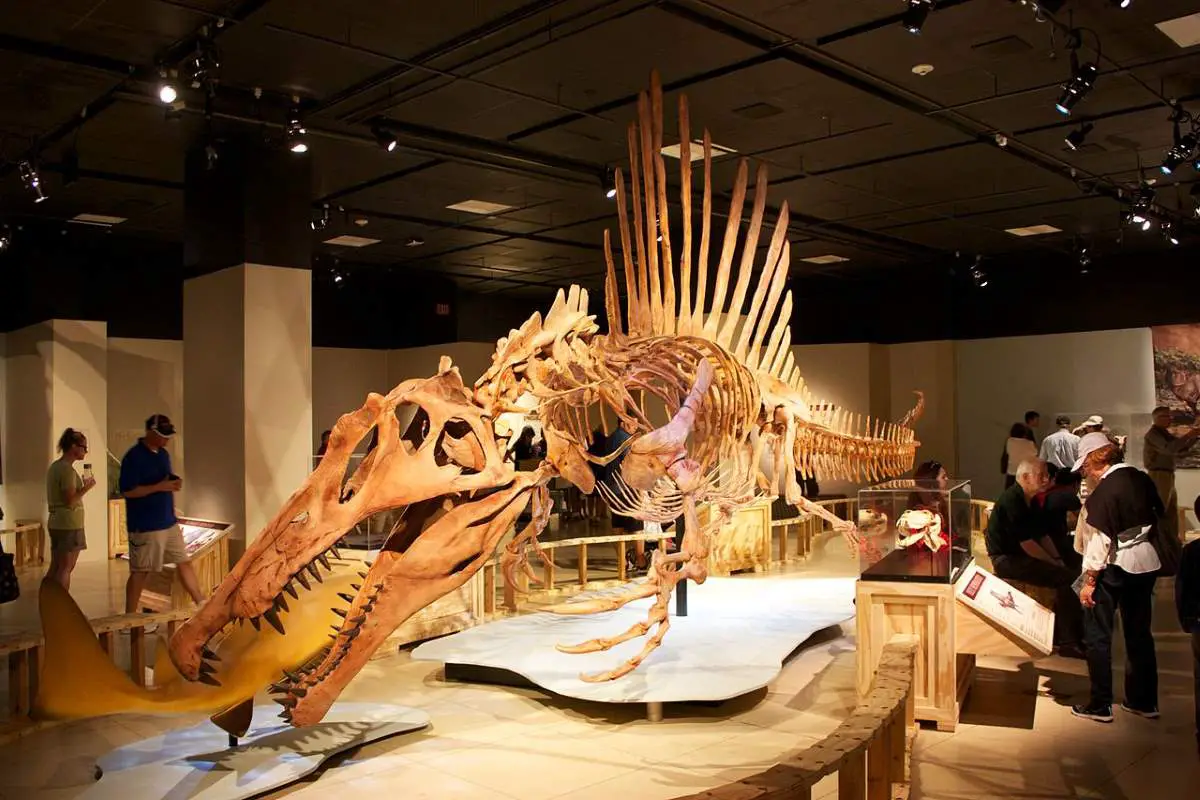
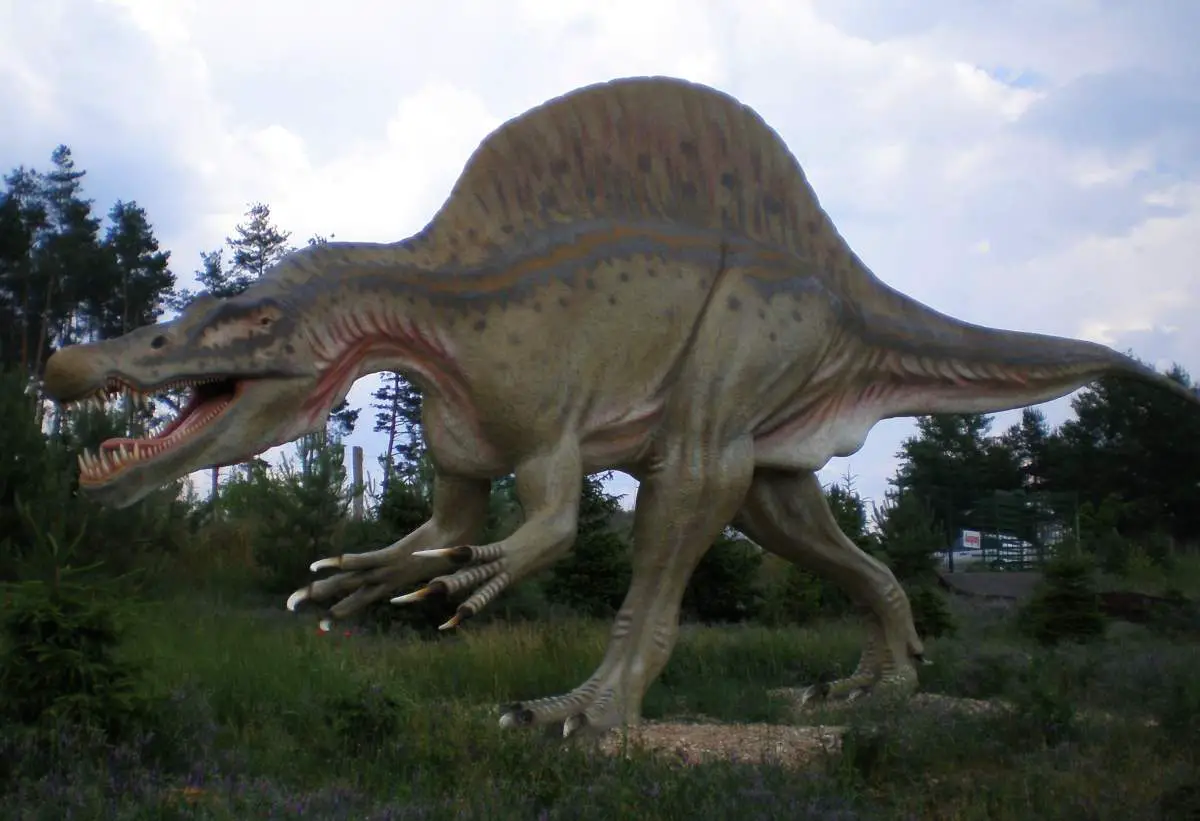
What about T. Rex?
Tyrannosaurus Rex was once widely considered (and often assumed) to be the world’s biggest carnivorous dinosaur, but not anymore. It is still among the largest known land predators and may have exerted one of the largest biting forces among all animals: a 2012 study by scientists Karl Bates and Peter Falkingham suggested that the bite force of Tyrannosaurus could have been the strongest of any terrestrial animal that has ever lived.
The calculations suggested that adult T. rex could have generated from 35,000 to 57,000 Newtons of force in the back teeth. Even higher estimates were made by Prof. Mason B. Meers of the University of Tampa in 2003. In his study, Meers estimated a possible bite force of around 183,000 to 235,000 Newtons or 18.3 to 23.5 metric tons (20.2 to 25.9 short tons).
But in size, it has been surpassed in the rankings by Spinosaurus and Giganotosaurus. The largest complete specimen, located at the Field Museum of Natural History under the name FMNH PR2081 and nicknamed Sue, measured 12.3 meters (40 ft) long and was 4 meters (13 ft) tall at the hips. Mass estimates have varied widely over the years, from more than 7.2 metric tons (7.9 short tons) to less than 4.5 metric tons (5.0 short tons), with most modern estimates ranging between 5.4 metric tons (6.0 short tons) and 6.8 metric tons (7.5 short tons).
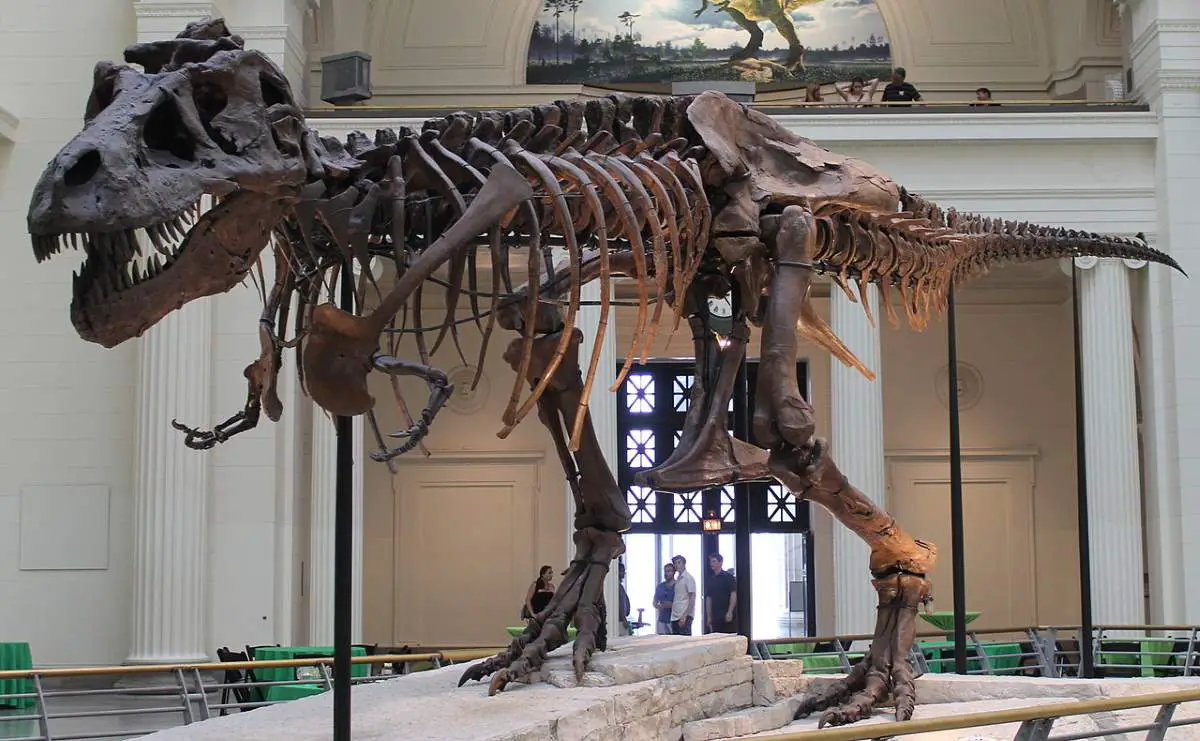

How did dinosaurs get that big?
How did these amazing animals get that big? The video published by the PBS Eons channel gives some answers to that question.
Why determining the largest dinosaur is so hard?
Determining the “winner” of the largest dinosaur competition is not an easy job. Because:
- Fossils are rare. Really, really rare. Most remains are consumed by scavengers or get destroyed in other ways soon after death. Furthermore, fossilization is a very complex process and needs certain prerequisites. So, even finding a fossilized bone fragment is great luck, let alone finding a complete skeleton! So, many of the largest dinosaur skeletons are incomplete.
- There’s no single metric to determine the largest dinosaur. In other words, what measure do you even compare? Length, height, or weight? A longer dinosaur might be way lighter as in the case of the supersaurus.
- Techniques to measure dinosaurs’ sizes were not very accurate. Different researchers are using different models, and achieving different results. But, scientists constantly refining them, and today, different techniques are finding similar results. This means estimations of dinosaur size are becoming more refined and falling into accord with each other.
- New realizations also can change experts’ expectations, too. For example, paleontologists realized that the vertebrae of sauropods were filled with air sacs to keep them light. So, they had to adjust how they determine the mass (scaled it down).
Lost giants
There were also lost fossils once thought to be a part of the largest dinosaur that ever lived.
- In 1878, American zoologist and fossil hunter Edward Drinker Cope (July 28, 1840 – April 12, 1897) found the fossilized bone of a sauropod species called Amphicoelias (1878). The bone measured almost twice as long as any other. If it’s true, it was possibly the largest dinosaur ever discovered. But, mysteriously, the bone was lost.
- In the 20th century, fossilized bones of a Bruhathkayosaurus were found in India. In a 1987 paper, its size was described as longer than 35 meters (115 ft) and weighing over 80 tonnes, which makes Bruhathkayosaurus even larger (bulkier) than Argentinosaurus. Then, in 2017, it was reported that the holotype fossils had disintegrated and no longer exist.
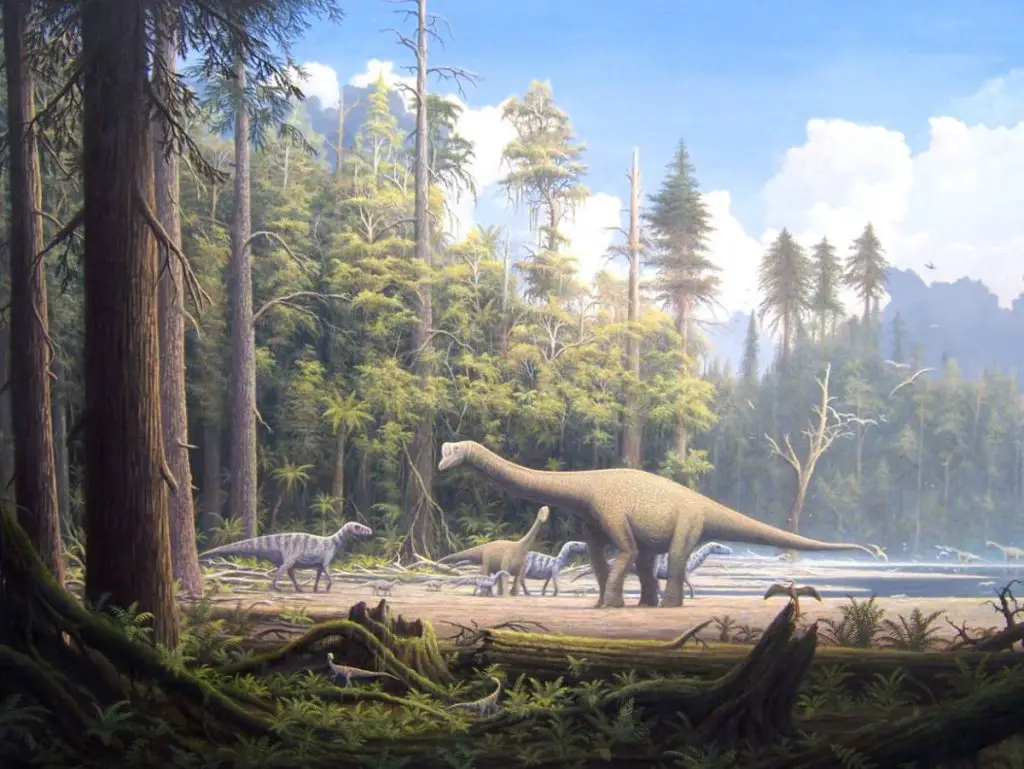
Sources
- Dinosaur size on Wikipedia
- Argentinosaurus on Wikipedia
- Spinosaurus on Wikipedia
- Tyrannosaurus on Wikipedia
- Sue on Wikipedia
- “Supersaurus might be the longest dinosaur that ever lived” on the Live Science website
- Patagotitan on Wikipedia
- Supersaurus on Wikipedia
- Why the World’s Biggest Dinosaurs Keep Getting Cut Down to Size? on the New Scientist website
- Moon Landings: All-Time List [1966-2025] - February 2, 2025
- What Is Max-Q and Why Is It Important During Rocket Launches? - January 16, 2025
- Top 10 Tallest Rockets Ever Launched [2025 Update] - January 16, 2025



